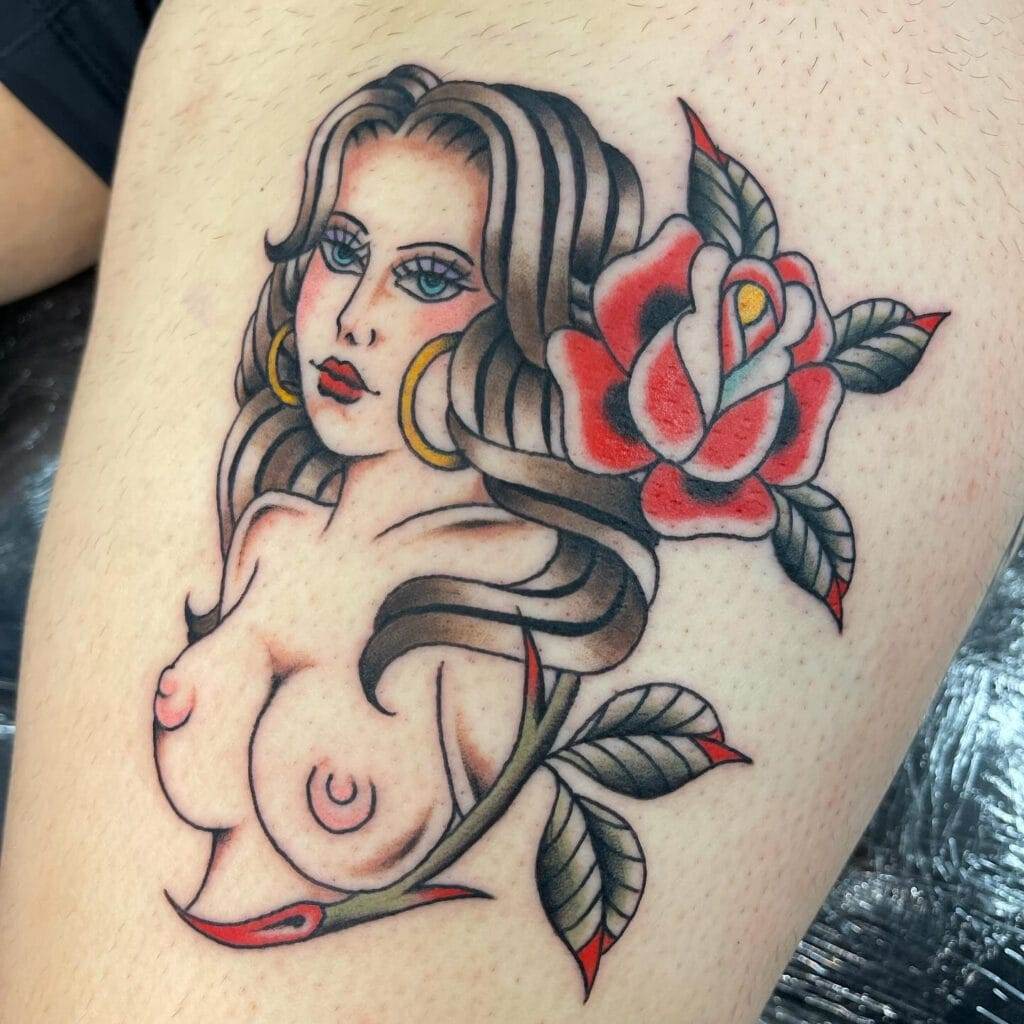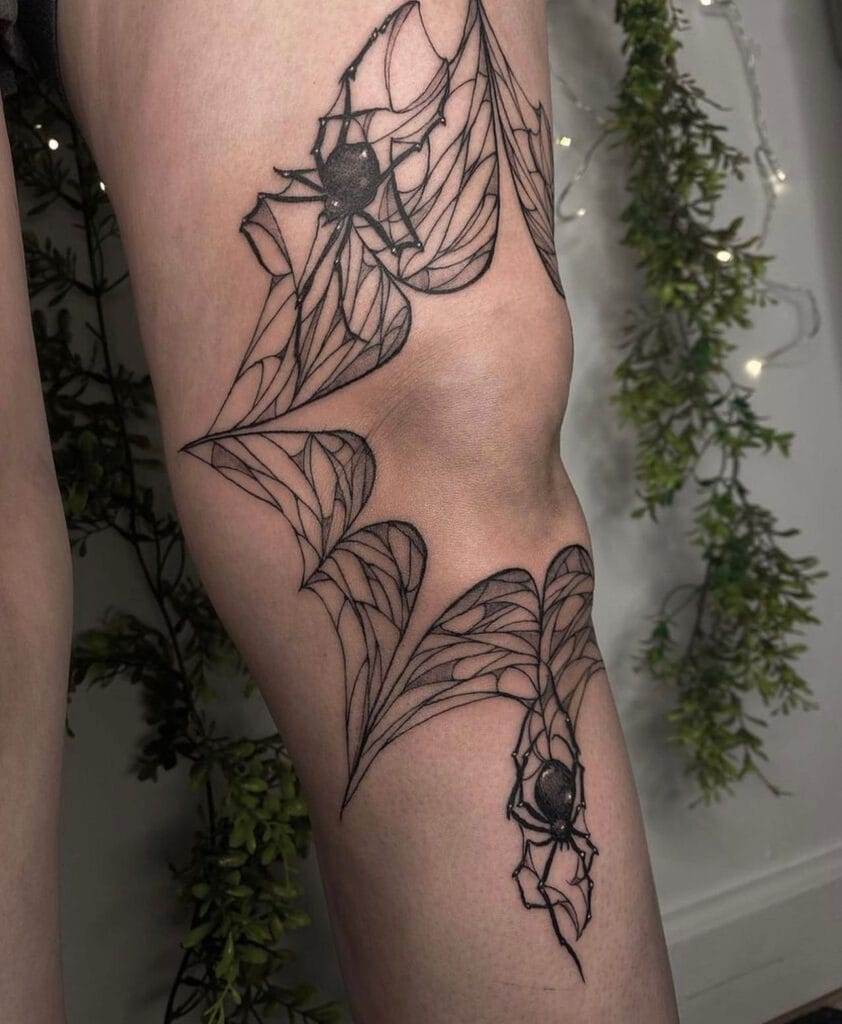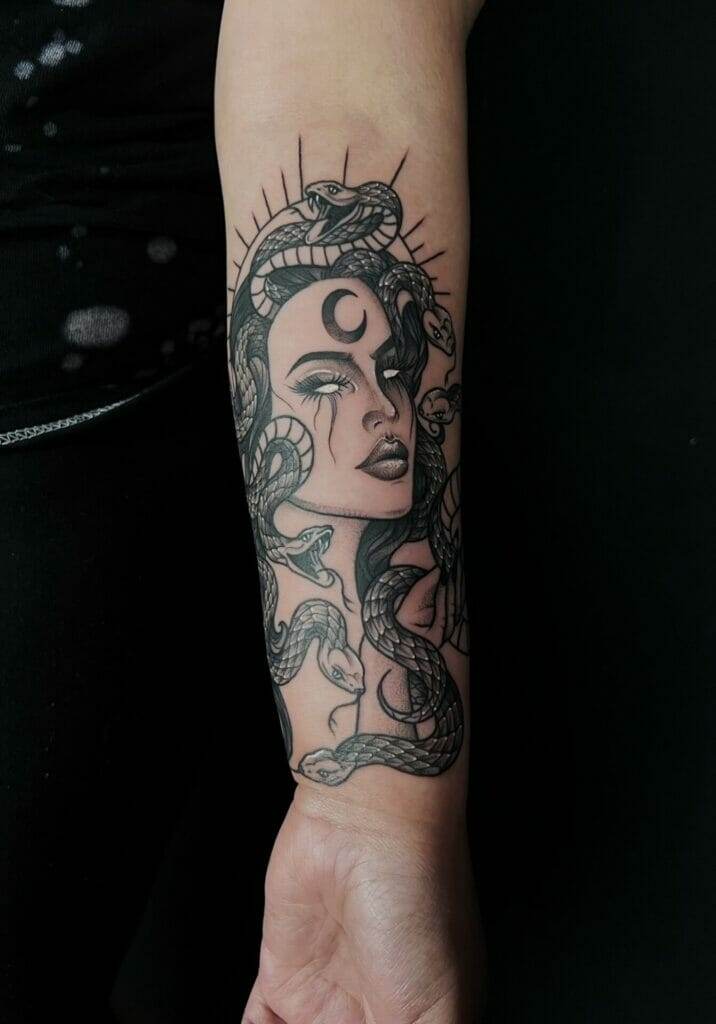Kingwood, a small town nestled in the heart of Texas, may not be the first place that comes to mind when you think of Gothic culture. However, hidden within its borders lies a thriving Gothic tattoo scene that is as dark and intricate as the tattoos themselves. In this article, we will delve into the world of Gothic tattoos in Kingwood, exploring their history, meaning, styles, and more.
Gothic tattoos are a unique form of body art that draws inspiration from the Gothic subculture. They are characterized by their dark and intricate designs, often featuring symbols and themes associated with the Gothic aesthetic. These tattoos hold deep significance for those who choose to adorn their bodies with them, serving as a form of self-expression and a way to embrace their love for all things dark and mysterious.
The History of Gothic Tattoos: From Ancient Times to Modern Day
Tattoos have been a part of human culture for thousands of years, with evidence of their existence dating back to ancient civilizations such as Egypt and China. In these early times, tattoos were often used as a form of identification or to symbolize one’s status within a community. However, it wasn’t until the rise of the Gothic subculture in the late 20th century that Gothic tattoos began to emerge.
Gothic tattoos have evolved over time, reflecting the changing trends and influences within the Gothic subculture. In the early days, Gothic tattoos were often simple and minimalistic, featuring symbols such as crosses, bats, and skulls. As the subculture grew in popularity, so did the complexity and intricacy of Gothic tattoos. Today, Gothic tattoos can be incredibly detailed and elaborate, incorporating elements such as lacework, filigree, and ornate lettering.
The Rise of Gothic Culture in Kingwood
The rise of Gothic culture in Kingwood can be attributed to a variety of factors. One of the main reasons is the increasing popularity of alternative subcultures in recent years. As people seek to express their individuality and embrace their unique interests, Gothic culture has become a popular choice for many in Kingwood.
Gothic culture encompasses a wide range of interests and aesthetics, including music, fashion, literature, and art. In Kingwood, Gothic culture has found a home among those who appreciate the dark and mysterious, as well as those who are drawn to the beauty and intricacy of Gothic tattoos. The town has seen an influx of Gothic-inspired events, such as goth nights at local bars and clubs, as well as an increase in the number of tattoo studios offering Gothic tattoo designs.
The Meaning Behind Gothic Tattoos: Symbolism and Themes
Gothic tattoos are rich in symbolism and themes, each design holding its own unique meaning for the wearer. Some common symbols found in Gothic tattoos include crosses, bats, ravens, roses, and skulls. These symbols often represent themes such as death, rebirth, spirituality, and the beauty found within darkness.
The meaning behind these symbols and themes can vary depending on the individual and their personal interpretation. For some, Gothic tattoos serve as a reminder of their mortality and the fleeting nature of life. For others, they may represent a connection to the spiritual realm or a celebration of their love for all things dark and mysterious. Ultimately, the meaning behind a Gothic tattoo is deeply personal and can hold different significance for each individual.
Gothic Tattoo Styles: Dark and Intricate Designs
Gothic tattoos come in a variety of styles, each with its own unique characteristics. Some popular styles include traditional Gothic, neo-traditional Gothic, blackwork, and dotwork.
Traditional Gothic tattoos are characterized by their bold lines and dark shading. They often feature classic Gothic symbols such as crosses, bats, and skulls, and are reminiscent of the early days of Gothic tattooing.
Neo-traditional Gothic tattoos take inspiration from traditional Gothic designs but incorporate more modern elements and techniques. They often feature vibrant colors, intricate details, and a mix of traditional and contemporary Gothic symbols.
Blackwork tattoos are characterized by their heavy use of black ink and bold, graphic designs. They often feature intricate patterns, geometric shapes, and abstract imagery.
Dotwork tattoos are created using a technique that involves creating designs using only dots. This style is often used to create highly detailed and intricate designs, such as lacework or mandalas.
The Role of Black Ink in Gothic Tattoos
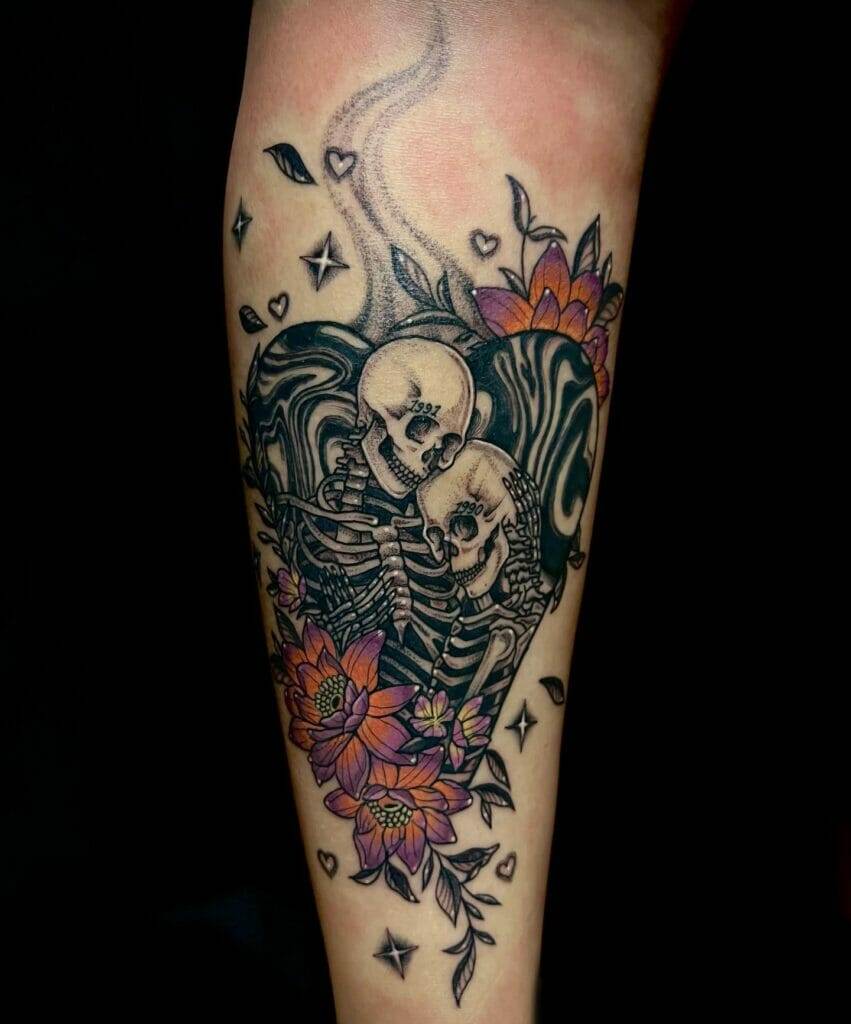
Black ink plays a crucial role in Gothic tattoos, as it is the primary color used to create the dark and mysterious aesthetic that is characteristic of the Gothic subculture. Black ink is often used to create bold lines, shading, and intricate details in Gothic tattoo designs.
The use of black ink in Gothic tattoos serves to enhance the overall impact of the design, creating a sense of depth and dimension. It also helps to create a stark contrast against the skin, making the tattoo stand out and catch the eye.
Different styles of Gothic tattoos may utilize black ink in different ways. Traditional Gothic tattoos often feature heavy black shading and bold lines, while neo-traditional Gothic tattoos may incorporate black ink into more intricate details and patterns. Blackwork tattoos rely heavily on black ink to create bold, graphic designs, while dotwork tattoos use black ink to create highly detailed dot patterns.
The Tattooing Process: How Gothic Tattoos are Made
The process of creating a Gothic tattoo involves several steps, from the initial consultation to the final touch-ups. The first step is to meet with the tattoo artist to discuss your design ideas and determine the size, placement, and overall aesthetic of the tattoo.
Once the design has been finalized, the tattoo artist will begin the tattooing process. This typically involves outlining the design using a tattoo machine and black ink. Once the outline is complete, the artist will begin shading and adding details to the design, using various techniques such as stippling or cross-hatching.
Throughout the tattooing process, it is important to communicate with your tattoo artist and provide feedback on how you are feeling. Tattooing can be a painful process, especially for larger or more intricate designs, so it is important to take breaks if needed and communicate any discomfort or concerns you may have.
The Gothic Tattoo Experience: What to Expect
Getting a Gothic tattoo can be an exciting and transformative experience. However, it is important to know what to expect before going into the tattoo studio.
First and foremost, it is important to do your research and find a reputable tattoo artist who specializes in Gothic tattoos. Look at their portfolio, read reviews from previous clients, and schedule a consultation to discuss your design ideas.
During the tattooing process, you can expect some level of discomfort or pain. The level of pain will vary depending on factors such as the size and placement of the tattoo, as well as your own pain tolerance. It is important to communicate with your tattoo artist and let them know if you are experiencing any discomfort.
After the tattoo is complete, it is important to follow the aftercare instructions provided by your tattoo artist. This typically involves keeping the tattoo clean and moisturized, avoiding direct sunlight, and refraining from picking or scratching at the tattoo.
Tattoo Care for Gothic Tattoos: Keeping Your Ink Looking Fresh
Proper tattoo care is essential for keeping your Gothic tattoo looking fresh and vibrant. After getting a Gothic tattoo, it is important to follow a few simple steps to ensure that your ink heals properly and maintains its integrity.
First and foremost, it is important to keep your tattoo clean. Gently wash the tattoo with mild soap and warm water, being careful not to scrub or rub the area too vigorously. Pat the tattoo dry with a clean towel and apply a thin layer of fragrance-free moisturizer to keep the skin hydrated.
It is also important to avoid exposing your tattoo to direct sunlight, as this can cause the ink to fade and the skin to become damaged. If you must be in the sun, be sure to apply a high SPF sunscreen to protect your tattoo.
Lastly, it is important to avoid picking or scratching at your tattoo as it heals. This can cause scarring and damage to the ink, resulting in a less vibrant and less defined tattoo.
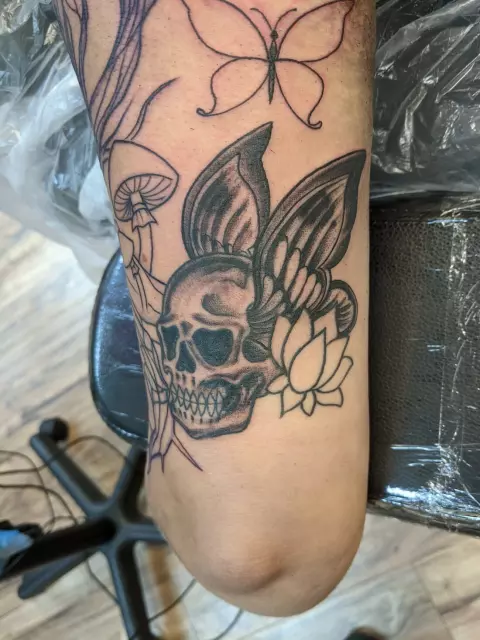
Embracing the Beauty of Gothic Tattoos in Kingwood
In conclusion, Gothic tattoos have found a home in Kingwood, Texas, where they are embraced by those who appreciate the dark and mysterious aesthetic of the Gothic subculture. These tattoos hold deep meaning for those who choose to adorn their bodies with them, serving as a form of self-expression and a celebration of all things dark and beautiful.
From their ancient origins to their modern-day evolution, Gothic tattoos have become a unique form of body art that reflects the changing trends and influences within the Gothic subculture. With their dark and intricate designs, these tattoos capture the essence of Gothic culture and serve as a visual representation of its themes and symbolism.
So, whether you are a long-time fan of Gothic culture or simply appreciate the beauty and intricacy of Gothic tattoos, consider embracing this unique form of body art in Kingwood. Find a talented Gothic tattoo artist, discuss your design ideas, and let them create a stunning piece of art that will forever adorn your body. Embrace the beauty of Gothic tattoos and let them tell your own personal story.

